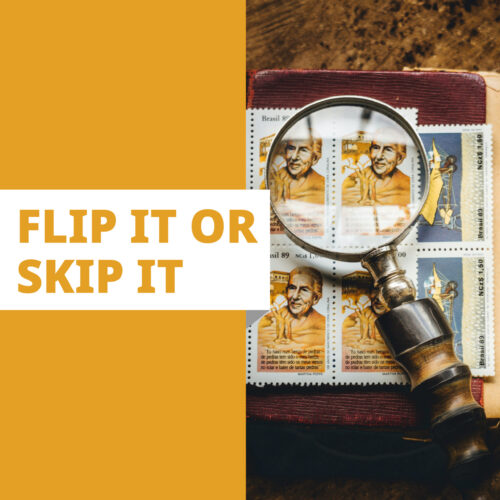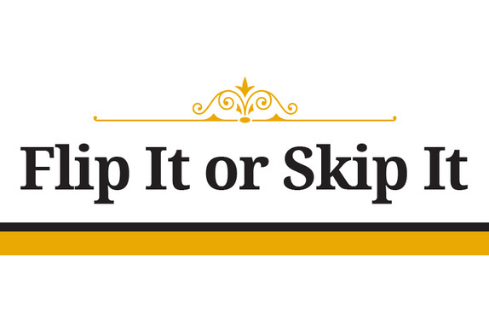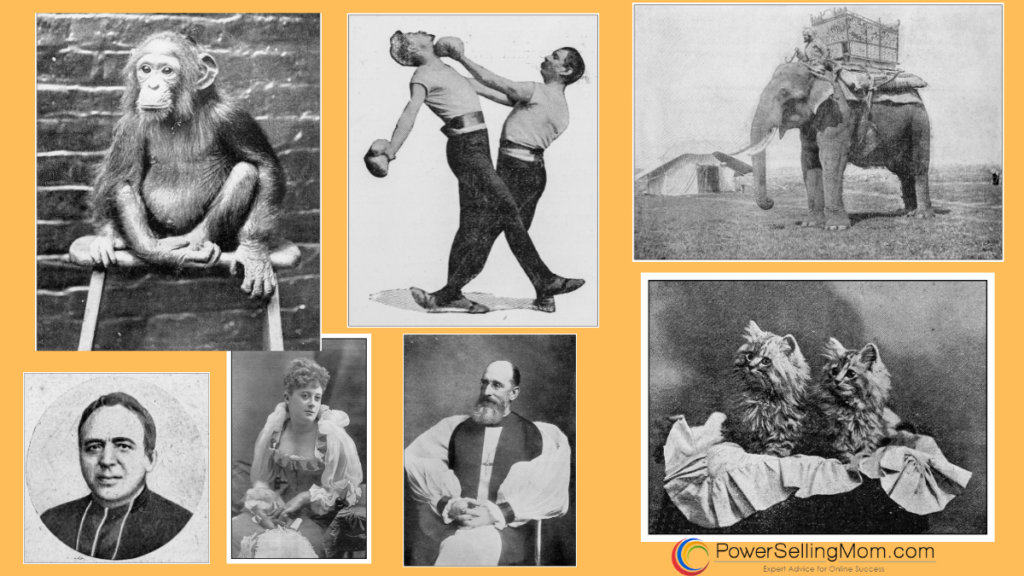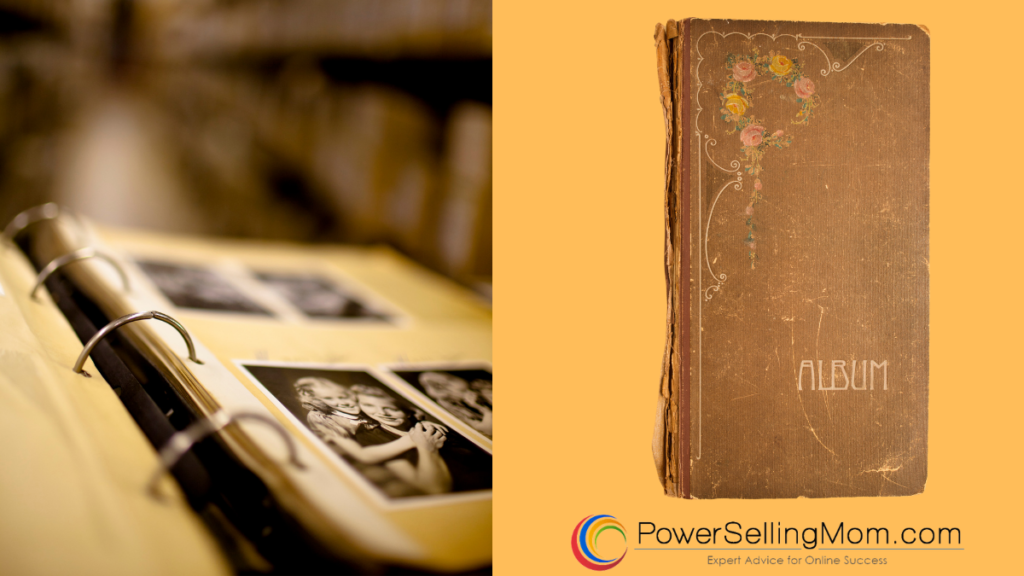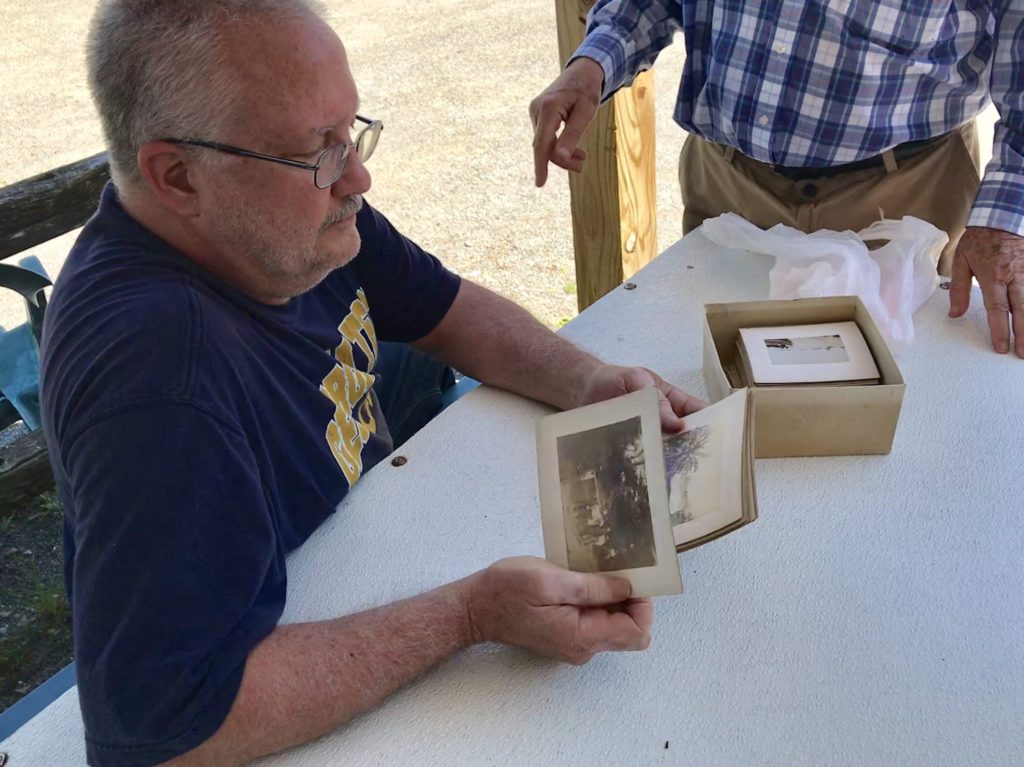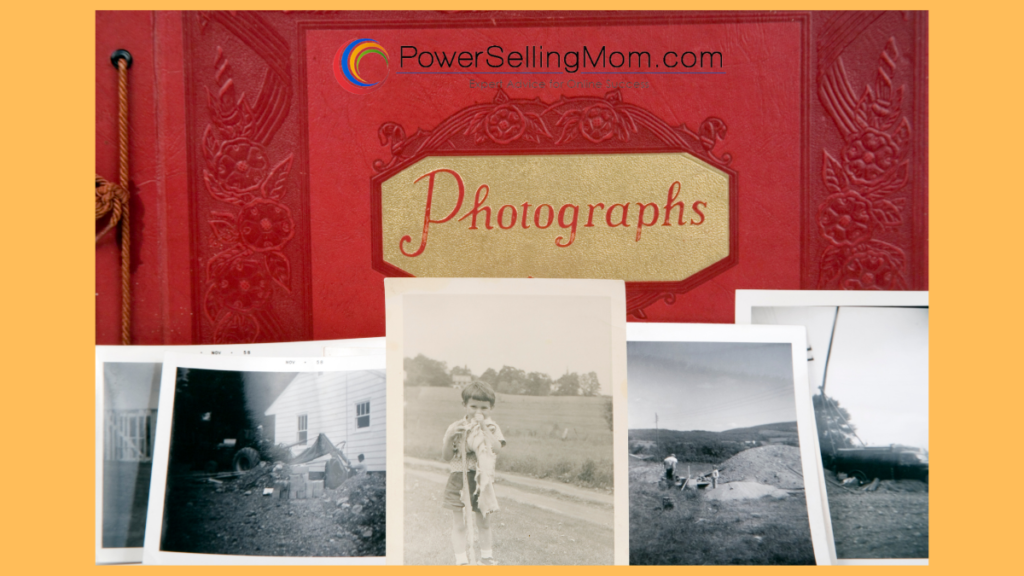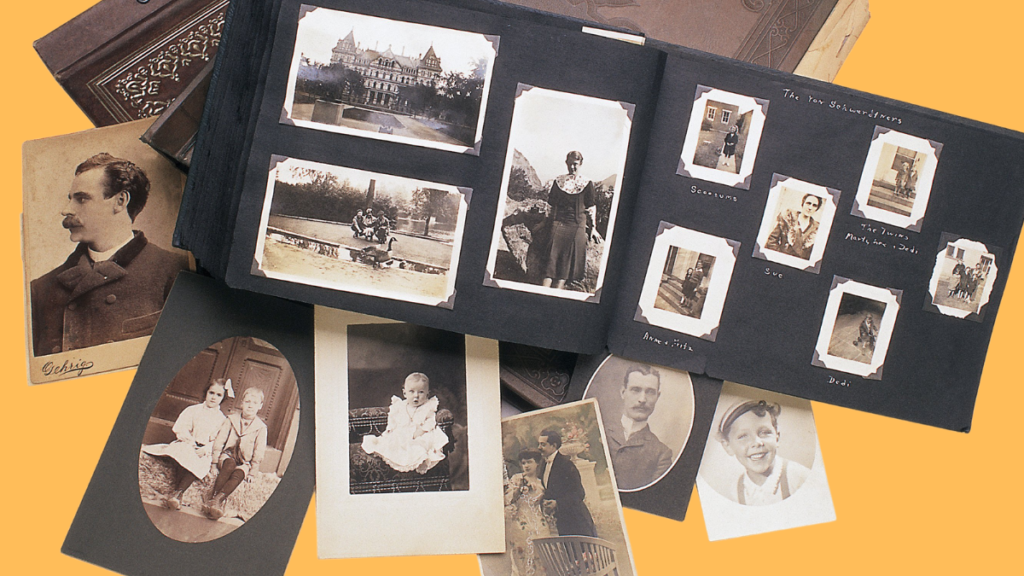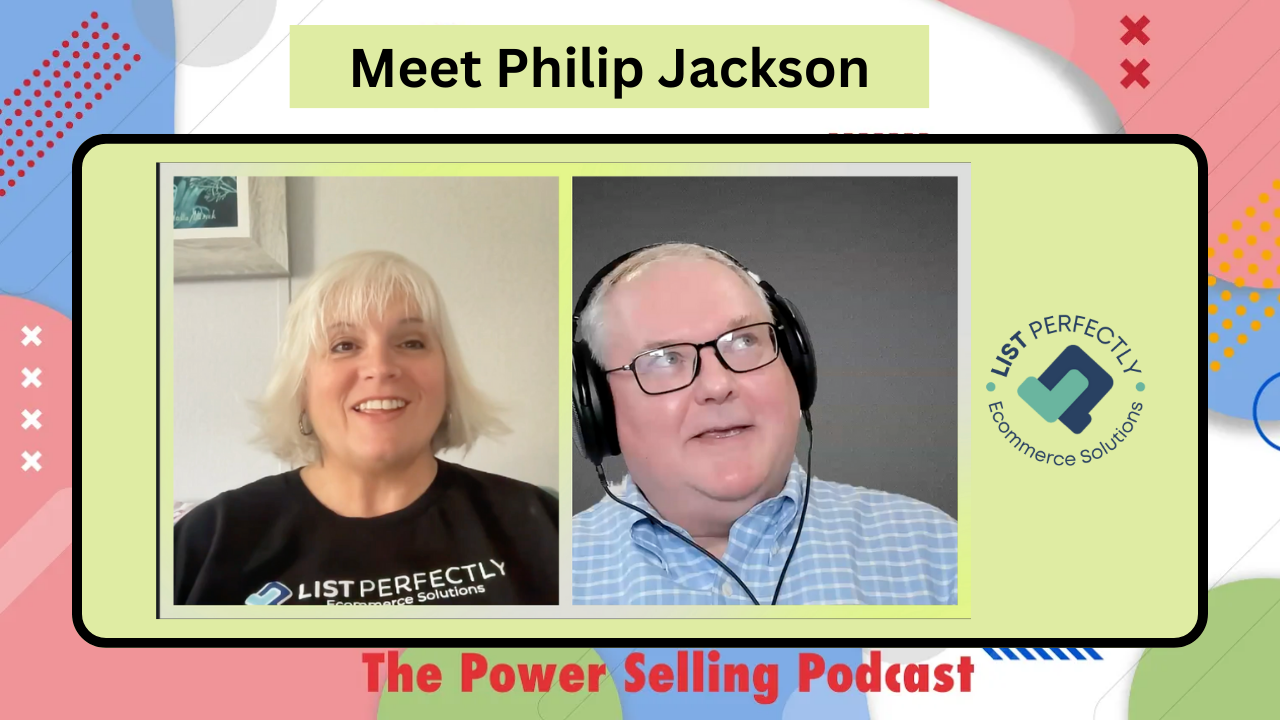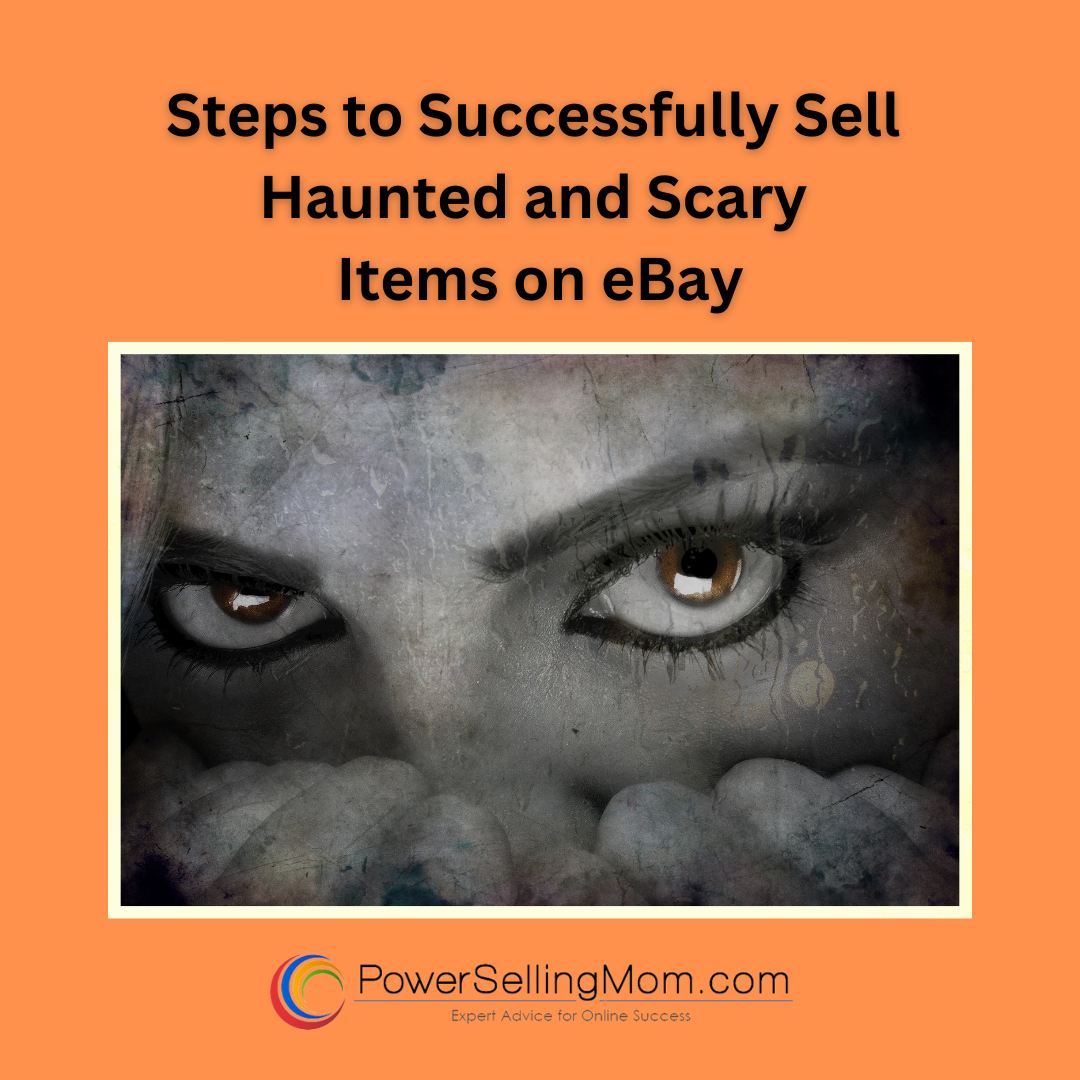Flip It or Skip It Podcast – Episode #4 – Photographs
Podcast Transcripts – Listen and/or Read
Danna Crawford 00:00 – Hi, I’m Danna Crawford.
Wayne Jordan 00:02 – And I’m Wayne Jordan.
Danna Crawford 00:03 – In today’s episode number four, we’re going to be talking about flipping vintage photos.
Wayne Jordan 00:10 – That’s right, we will. One of the reasons for doing this is because vintage photos are off the radar of most pickers and sellers. And that’s too bad. Because to begin with, there are a lot of photos available to pickers.
I mean, who doesn’t have boxes or albums full of family photos?
Plus, the prices of these photos are very reasonable. And the resale profit margins can be extraordinary. How about you Danna? Have you sold photos in your eBay store?
Danna Crawford 00:43 – I have, I really do enjoy picking through photographs and coming up with stories, and getting them listed on eBay. I’ve done well, how about you?
Wayne Jordan 00:54 – One of my favorite things to sell is ephemera in general. And I have sold some photos, I’ll tell you, what I like about it is that when you go into a flea market or an estate sale, those are my favorite two places to look for them.
Estate sales, especially because when you go into an estate, it’s just overwhelming; all the stuff in somebody’s house and to go through and get it organized. And the last estate sale that I did for someone, I had 10 people working the sale, and they worked 300 man-hours to get that sale-ready. And that’s a lot of work.
Yes, and there are some things that you just don’t go through in any detail because it takes too long. You don’t go through boxes of pictures, stacks of old magazines, you don’t pull every book off the shelf and see if it’s the first edition, and it’s really time-consuming. But for pickers who can go to those things, and spend some time looking through the boxes, they can find some really good photos.
It doesn’t matter if they’re photos of famous people, or you know, of course, that doesn’t hurt either.
A lot of regular family photographs can have value.
Because they show things like hairstyles and fashions and they’re period pieces and show people with their hobbies, you know, maybe with the horse or a car, or tradesman, something like that all of those things has value as photographs.
They’re fun to go through those boxes and collect. But in a big box of photos, you can usually buy the whole box for I don’t know if there’s 1,00 200, photos in there, sometimes you can get them for 10 bucks, you know, for a box or less five bucks for a box.
I mean, at auctions, I’ve often bought box lots for $2. Because the auctioneers wait till the end of the auction to bring this stuff to the block. And most of the people are gone. People don’t care, the auctioneer wants to get it over with and get it done, and they’ve got their money. So they’ll sell this box for two bucks.
I’ve made some of my best buys by just waiting it out at an auction. But you buy these things for what might come down to 10 cents or $1 or $2 per picture. And sometimes you can sell them for 100 bucks or 50 bucks. Even if it’s only 10 or 12, if you paid $1 for it, that’s a pretty good gross profit margin on the photo.
At an estate sale, most of the people who are coming in, they’re looking for the big popular items like glass and ceramics and collectibles and action figures and that kind of thing. And, and the ephemera pickers can have a field day in those places. And I think that’s what appeals to me about this whole business.
Tell me about photos that you acquired.
How’d you get them? How’d you priced them? How did you go about selling them? Give us an idea of what you did?
Danna Crawford 04:16 – Well, I have to share with you that I actually gained my best education about photos was from the CEO at WorthPoint, Will Seippel. He and I organize and head up the treasure hunts for WorthPoint.
When we would go out on these treasure hunts and we would all gather around Will to see what he was going to pick, he would head right for the scrapbooks.
And the shoeboxes full of postcards and photographs. It was really interesting to watch him in action. As he would go through these boxes, especially what I learned from him was the photo albums that I never even thought to look at in the past and the scrapbooks.
Next, he would flip through the page of the scrapbooks and then make them an offer and negotiate the price on the entire scrapbook. Right. And, of course, he would walk away with fantastic photos. So I started using his style. And in fact, I just recently acquired, from a local auction here in Ocala, Florida, and I won a scrapbook full of photos.
Selling pages of photos from albums
The fun thing about sorting through these photos I’ve learned is I’ve ripped the whole page out, and then I would list the entire page and leave the photos in place. If they were easy to remove, I would flip them over and try to see if there’s any writing on the back any hint of names.
One particular page had a girl that was on a motorcycle, she had a big 60s kind of hairstyle. And all I knew was her name was Linda. So I went ahead and listed Linda, I just put Linda in the title motorcycle 60s, 1950s, 1960s, and kind of dated it a little bit. I didn’t know anything about it. And I sold them for $45.
Wayne Jordan 06:30 – How many pictures were on there?
Danna Crawford 06:31 – It was four. So yeah, you just never know. It’s challenging sometimes. And I also have seen people on eBay. I don’t know if you attended one of my webinars about selling crazy things on eBay and the odd side of eBay, where people would get a photograph and there was one of a baby.
And they said in the listing that they thought the photograph was possessed, or it was supernatural. And they made up this entire story about the baby that was making the flower and the photo rise and blah, blah, blah. But it’s they had it up for quite a few dollars on eBay. I don’t know if it’s sold, actually. But it was fun to get creative with photographs.
Wayne Jordan 07:22 – And creative with the story. You know, it’s interesting. Are you familiar with the Significant Object Project? This was, oh, about 10 or 12 years ago. And here’s the hypothesis of the significant object project: that storytelling can transform insignificant objects into significant ones. And the gist of the experiment was that imaginative descriptions can bring better eBay prices, which is exactly what you’re saying here.
Curators of the project would go into thrift stores, and garage sales, and for no more than a few dollars. They buy little tchotchkes and cheap little things, and then they would pair an object with a participating writer. And the writer would write a fictional story, whatever they wanted to write, about the object. And here’s what happened.
Each of those objects was then listed on eBay, with the story and pictures of the object. But instead of a factual description, they used the fictional story. And they were very careful to avoid the impression that the story was a true one. And the intent of the project wasn’t to defraud anyone or perpetrate a hoax.
But the total purchase price of all these objects was like 130-some dollars, (the details are on their website), but they netted over $3,400 for these things, and all based on the story, Which, as I think about photographs, and buying photographs, of course, you don’t have to write a piece of fiction with everyone. But that’s one of the ways that I analyze a photo from going through a box.
Of course, there are the factual things like do I know where this is? Or who this is? Who, what when, where, why. I wonder what’s going on in this picture. What’s happening is there a story behind it and if you can connect yourself to the story in the picture and get that across to potential buyers in your description. I think it makes a huge difference in the price you get for the photo.
Danna Crawford 09:50 – Sure, absolutely. And then the photos that are celebrities. I’ve learned that you want to check and see if they’re common. Babe Ruth has had a lot of photos that were pretty common, he would just pass them out at all the events.
There’s a ton of them out there.
So it’s not as valuable. And then I have a consignment client that actually sent me some photos. And I thought it was interesting because his photos, on their own, were not valuable. But he bought signed checks. And we could do a whole other podcast on that. But he bought signed checks on eBay or somewhere that were by the person in the photo. And like, there’s one I have on there now from Gunsmoke, it’s a lady from Gunsmoke.
Then he just put the check with the photograph. And then now the value went up a little bit, and it gave it a little bit more history. Another thing I had recently sold just when the pandemic hit, and eBay sales slowed down, everything was slow. And then all of a sudden, out of the blue, I sold an autographed photo of Wilt Chamberlain for $250. And I thought, Who in the world is worried about buying a photograph of Wilt Chamberlain right now?
Wayne Jordan 11:18 – Right?
Danna Crawford 11:21 – But you just never know.
Wayne Jordan 11:24 – Well, that’s true with eBay, you can never tell when lightning will strike. I’ll tell you what, this is a good spot to take a break for a word from our sponsor. But we’ll be right back with more tips on flipping vintage photos. Hold tight.
WorthPoint advertisement 11:41 WorthPoint helps you make more money by ensuring that every sale brings the profit it should. We take the guesswork out of how much to pay, and how high to price. The WorthPoint price guide lists over 500 million items, sold for prices, and photographs. 15 years of Antiques and Collectibles data. Put simply, WorthPoint helps you make more money. For a seven-day, seven-lookup free trial, go to worthpoint.com.
Wayne Jordan 12:11 – Okay, we’re back. When you were watching Will Seippel do his thing at shows and fairs and go through these boxes, what did you notice about the process that he used? And how did you adapt that process into your own searching through boxes and such and albums? What do you look for as you go through and evaluate vintage photos?
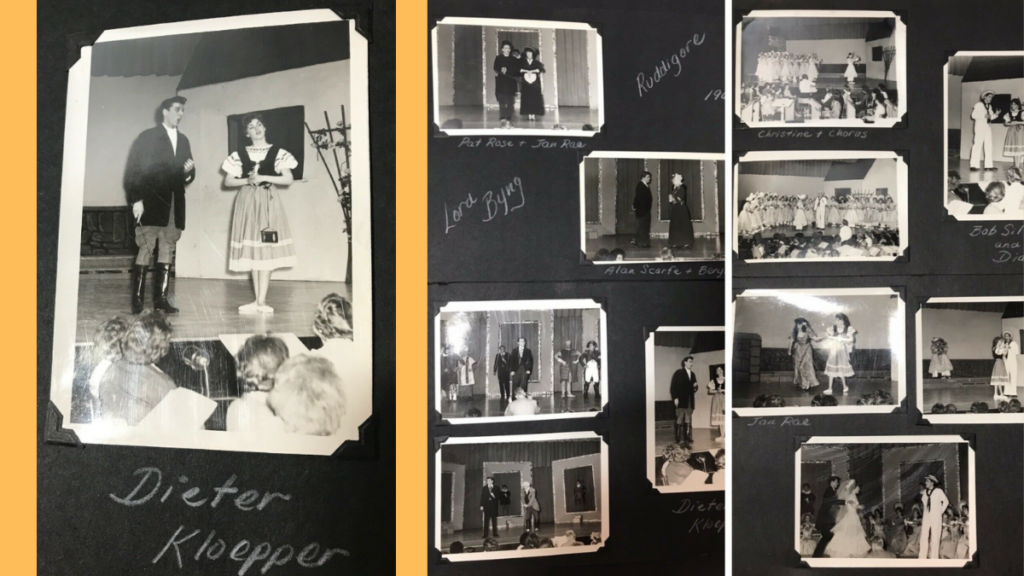
Danna Crawford 12:39 – Well, I noticed that Will would pay attention to not only the person in the photo, but he would pay attention to the background. And where possible, you know, the photo could be taken, I’d think that that can help determine value. I know Will was also trying to build the History in Photos database, so he was looking for all types of photos including glass, I don’t know what they’re called, exactly.
Wayne Jordan 13:15 – Plates, glass plates, I believe.
Danna Crawford 13:16 – He would be looking for everything you can imagine on background scenery versus the person just standing there with a smile. And you know, there’s not much story behind the person. So I started paying attention to landscapes and things like that. For example, here in Florida, we used to have a place called Six Gun Territory.
I can remember going there as a kid when I lived in Illinois, and we would travel and do Disney and Six Gun Territory. And Six Gun Territory is not there anymore. Now it’s a shopping center. And I have family photos from Six Gun Territory, my mom, and dad, and I. You can see the gunfighters and the Six-Gun Territory in the background.
So those photos I could probably sell. They would be desirable to the folks that remember Six Gun Territory, not because they want to look at us, but they want to capture that moment in time.
Wayne Jordan 14:28 – You’re right. It’s fascinating for the memory that it would hold for someone collecting that kind of thing. And there are other things that people collect and have an interest in where photographs would augment their collection.
Folks who collect railroad memorabilia, lanterns, and that sort of thing: caps, and plates, and cups, photographs are a perfect complement to that collection. Automobile enthusiasts and all the different things, areas that collectors involve themselves in photographs have an appeal to those groups.
Danna Crawford 15:09 – Yes, I think it’s a fascinating industry. And it’s a fascinating style of collectors that collect photographs. And some people don’t collect photographs, but they actually collect the memorabilia involved in the photographs. So that’s why they end up purchasing that photo to complete a collection.
Wayne Jordan 15:33 – So when you’re going through the box, other than through boxes of photographs, other than the image themselves, how do you analyze the physical photograph?
Danna Crawford 15:49 – Well, it’s always helpful when people write something on the back. So I know, my grandmother, that was like her pet peeve before she passed away, that she wanted to make sure all of her photos were documented. So she made sure that so that everybody, you know, future generations would know great, great aunt whoever and, and, you know, know who everybody was.
The nice thing about that is when especially last names, so if you turn it, you flip a photo over, and it’s got, even just Gertrude Jacobson. And then if you try to decode, you know, the year or get an idea based on the clothing of the style. But the important thing is that you want to include that name in that title, or in that description, or both.
Because there are people out there that collect that family name. And there are people that on eBay, you can actually adjust your alerts so that you get notices if anybody lists anything with that name. Or if anybody lists something with that location or whatever, whatever you collect so that you get notices right away.
I’ve learned that from listing postcards from a town where I grew up called Coal City, Illinois, and I had a bunch of postcards from my grandmother that I listed. And here, the museum had that on their alert. So the museum every time I would list something, the museum would be in there buying it.
So yeah, so you want to make sure that you have all types of keywords that are found on the photo, don’t say, well, I’m not going to bother putting Gertrude in there because, you know, you may be missing a sale.
Wayne Jordan 17:52 – What other kinds of things do you check for?
Danna Crawford 17:55 – Well, condition is important if it’s ripped, or, or faded, or there are stains on it. So the condition is important. And you follow your instincts, bottom line.
Wayne Jordan 18:08 – Do you look for negatives? Or are negatives a bonus?
Danna Crawford 18:13 – I don’t. I have not gotten involved in negatives. I know that Will [Seippel] does like negatives. And of course, it’s so that he can reproduce the photos, I have not gotten involved in that, have you?
Wayne Jordan 18:31 – No. I’m a little bit gun shy about that, although I might start looking into it a little closer. Will, of course, has been collecting that sort of thing for decades. He’s one of the real experts in the field.
For me, I’m a little bit concerned about the copyright implications. If I buy a picture of physical positive of a picture, and there are negatives, I can sell the positive and I can sell the negatives, but I’d have to be real careful about reproducing prints from the negatives. It’s very similar to to buying a book. If I buy a book, I can sell the book to somebody else.
The entire resale industry is based on being able to resell physical objects that you buy. But it’s a completely different thing for me to scan the pages of these books and republish the book. There are people that do it for books that are out of copyright, but there are just too many ins and outs of copyrights.
Like everybody has a right to their image and if a photographer goes to a wedding, and takes pictures of the wedding and gives the package to the bride and the groom the bride In the groom own the pictures, and they may even own the negatives, but they don’t own the copyright. I’m not a lawyer, let me say this.
I’m not an intellectual property lawyer. But I will say that the subject is too complicated to talk about in a 20-minute podcast. People take classes in law school on this subject and make it their specialty. So I will not pretend to know all the ins and outs. But I do know enough about it to be a little bit gun shy. And I’d have to make sure if I were to do it that I was on solid ground. So you don’t mess with negatives, then?
Danna Crawford 20:41 – No, photos are definitely worth flipping.
Wayne Jordan 20:44 – I think they are, too. I think the profits in flipping photos are really good. And they’re so easy to find. So easy to find.
Danna Crawford 20:53 – I just wanted to mention, too, there’s that retro look, you know, there’s that retro look of the kitchen with the interesting table tops and the interesting appliances? And if you can get a photo with the lady in the kitchen with the apron on and, and has all that interesting decor in the background. That makes for a good flip.
Wayne Jordan 21:22 – But yeah, images that have a historic time and place are great. Or, emotions; the looks on people’s faces. Trades, someone’s working on their job, mechanic, or a dentist, or a piano tuner, or something like that.
All those make really good things to collect the To flip, exactly. If you know what people are collecting that makes it easier to pick photographs makes it when you go through the box, you can say all these sells. And these sell and this sell.
So it’s worth it for anyone interested in getting into flipping photographs or picking photographs. It’s a great idea to spend some time on eBay, looking through sold items for various types of photographs. And you’ll see what people are buying, and you’ll see what they’re paying for it. So the bottom line is what, Danna?
Danna Crawford 22:23 – Yeah, so the bottom line is when you go out treasure hunting, you definitely want to look for those scrapbooks and those photo albums and those shoeboxes and all of those jewelry boxes that people store their photos in because you never know. You may find that big money, that big-ticket photo to flip.
Wayne Jordan 22:49 – That’s right. And even if you doubt the profits in a flipping run-of-the-mill photographs can be good. If you know what to look for. So don’t pass up the opportunity when you’re there at a flea market or an estate sale.
Take the time to go through these boxes and see what’s in them. And don’t be afraid of photos. It’s a great opportunity. Well, Danna, it’s been fun. And we’d like to thank our listeners for being with us today. And hope to see you again next week. Thanks.
Danna Crawford 23:21 – Thank you. Bye bye.
Learn more about podcast sponsor WorthPoint, the world’s largest antiques, and collectibles pricing and research database, and receive a free 7-day/7-lookup trial. With WorthPoint, you can buy right, sell right, and profit more

